
Macrosaccus robiniella is a moth of the family Gracillariidae.

Phyllonorycter maestingella is a moth of the family Gracillariidae. It is found in Europe, Russia and British Columbia, Canada.

Phyllonorycter apparella, the aspen leaf blotch miner moth, is a moth of the family Gracillariidae. It is found in most of Europe. It is also present in Turkey and North America.
Neolithocolletis kangarensis is a moth of the family Gracillariidae. It is known from Perlis, Malaysia.
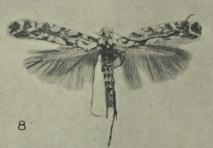
Acrocercops aellomacha is a moth of the family Gracillariidae, known from New Zealand. In 2019 Robert Hoare proposed that this species be provisionally assigned to the genus Eumetriochroa. However as this proposal needs further investigation this species is also currently known as Eumetriochroa (s.l.) aellomacha.
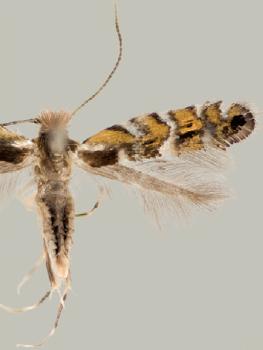
Macrosaccus morrisella is a moth of the family Gracillariidae. In North America it is known from Manitoba, Ontario, and Quebec, south and west to Texas and Colorado.
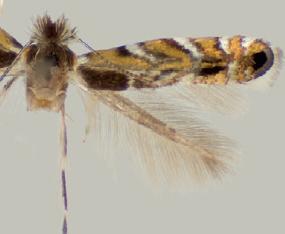
Macrosaccus uhlerella is a moth of the family Gracillariidae. It is known from Illinois, Missouri, New York, Colorado and Texas in the United States.
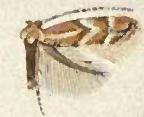
Phyllonorycter celtisella is a moth of the family Gracillariidae. It is known from Ontario in Canada and Connecticut, Illinois, Kentucky, Ohio, Oklahoma, and Texas in the United States.

Phyllonorycter tritaenianella is a moth of the family Gracillariidae. It is known from Québec in Canada and Illinois, Kentucky, Maine, Michigan, New York, Connecticut and Massachusetts in the United States.

Cremastobombycia grindeliella is a moth of the family Gracillariidae. It is known from California, United States.
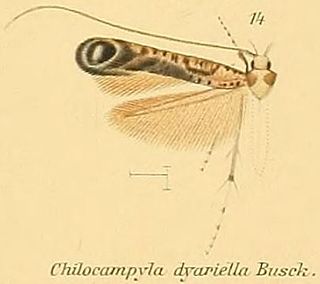
Chilocampyla dyariella is a moth of the family Gracillariidae. It is known from Florida, United States.
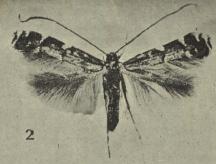
Acrocercops zorionella, also known as the karamu leafminer, is a species of moth in the family Gracillariidae. It is endemic to New Zealand.

Acrocercops panacitorsens or Eumetriochroa panacitorsens is a moth of the family Gracillariidae. It is endemic to New Zealand. In 2019 Robert Hoare proposed that this species be provisionally assigned to the genus Eumetriochroa.
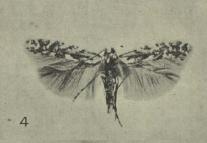
Acrocercops panacivermiforma or Eumetriochroa panacivermiforma is a moth of the family Gracillariidae. It is endemic to New Zealand. In 2019 Robert Hoare and colleagues proposed that this species be provisionally assigned to the genus Eumetriochroa.

Macrosaccus is a genus of moths in the family Gracillariidae.

Macrosaccus neomexicanus is a moth of the family Gracillariidae. It is known from the south-western United States in the states of Arizona and New Mexico.

Pectinivalva minotaurus is a moth of the family Nepticulidae. It is found in southern Queensland.
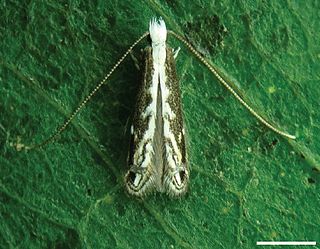
Spinivalva is a genus of moths in the family Gracillariidae. It contains only one species, Spinivalva gaucha, which is found in Brazil.
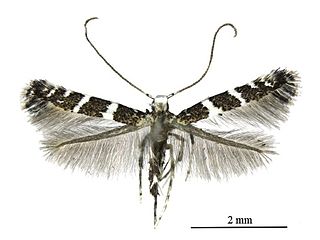
Telamoptilia grewiae is a moth of the family Gracillariidae. It is found in China (Tianjin).

Micrurapteryx caraganella is a moth of the family Gracillariidae. It is found in Siberia, and possibly Tajikistan and the Russian Far East.












